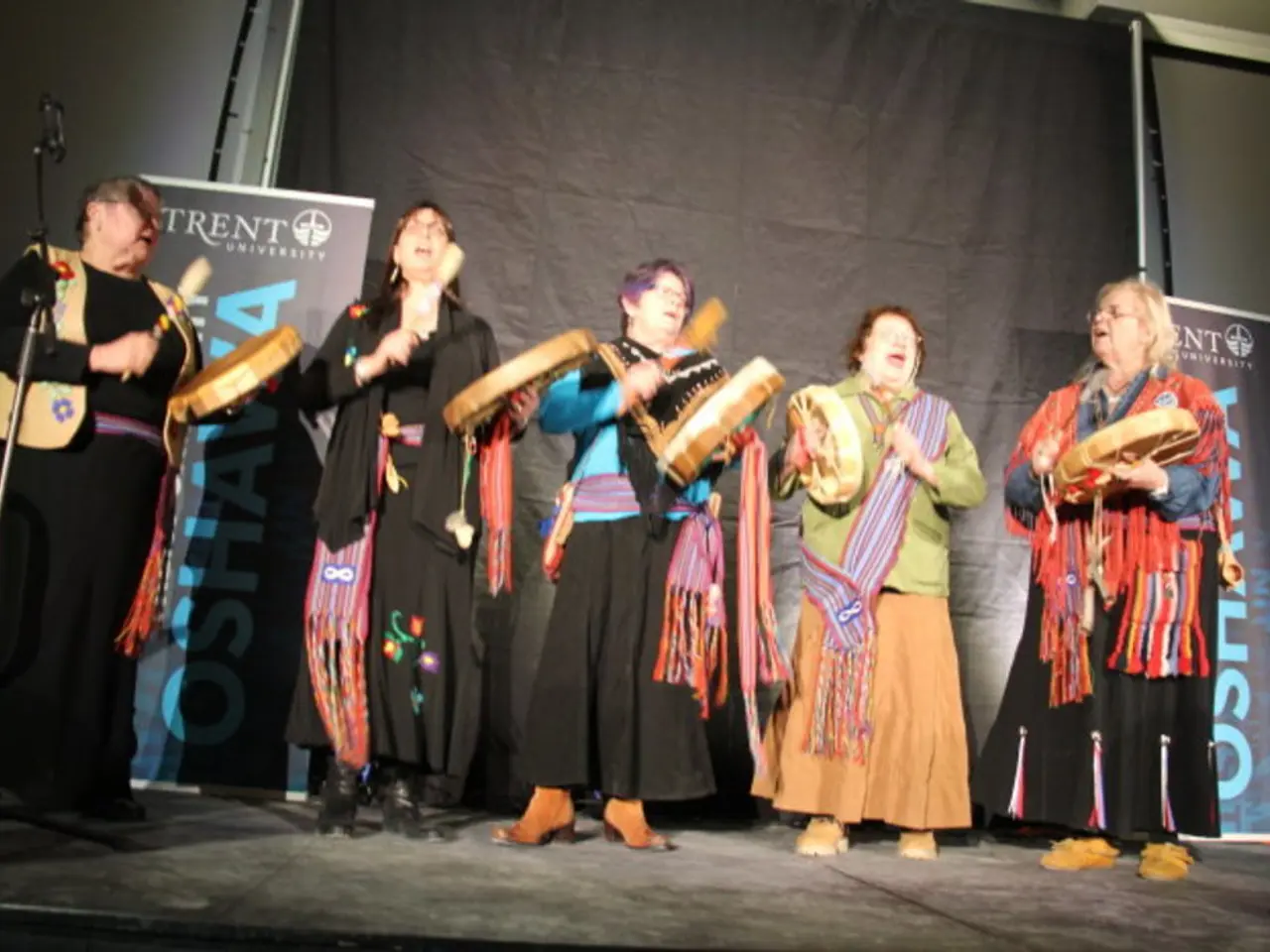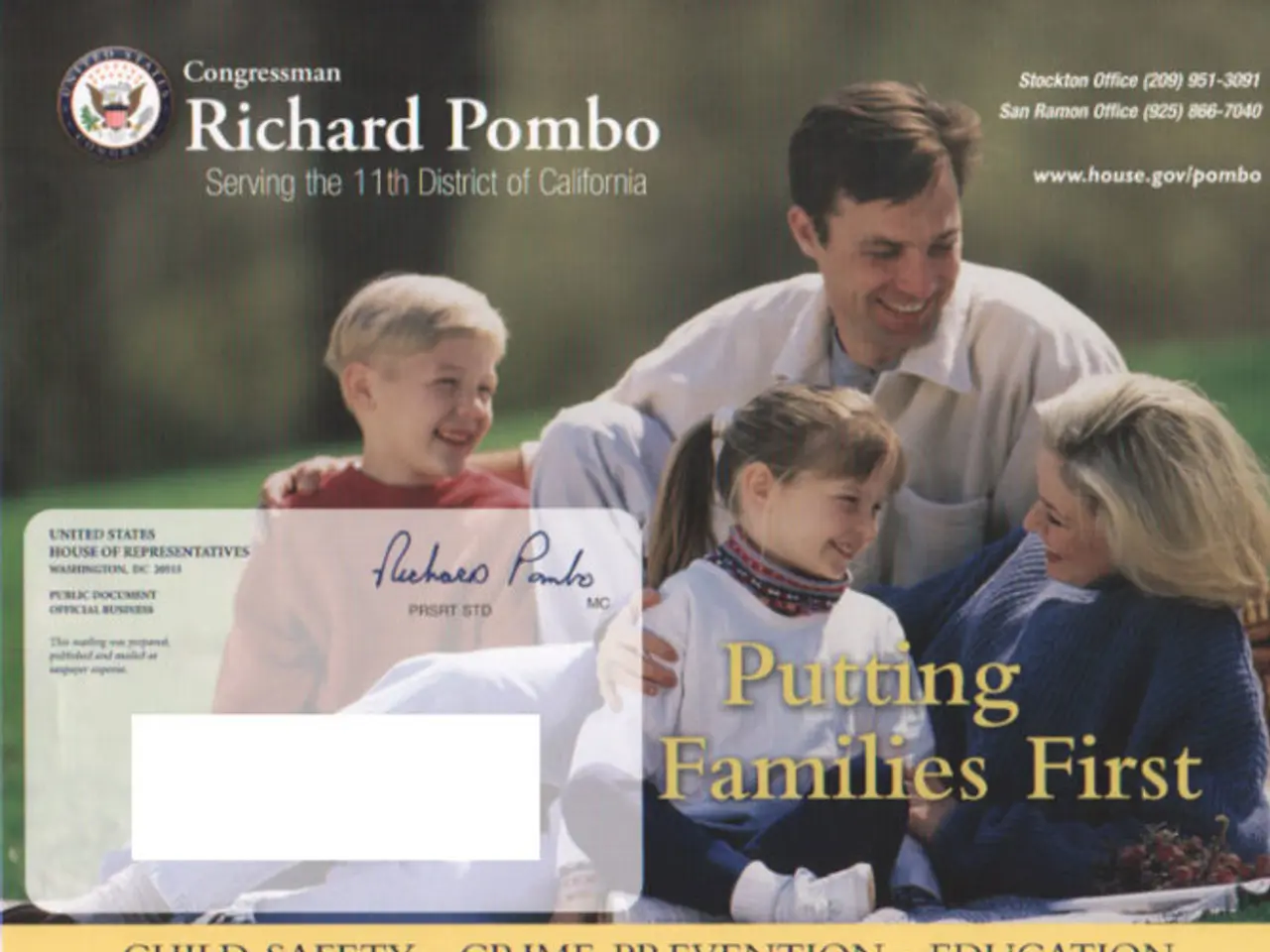Exploration of Brooklyn: Rokhl Kafrissen's Yiddish Idealistic Community
Rokhl Kafrissen, a contemporary artist known for her unique blend of traditional Yiddish culture and modern sensibilities, has released a new song titled Kum tsu mir on August 20, 2021. The song, sung in Yiddish, reflects themes of longing, humor, and cultural continuity, much like Kafrissen's previous works.
A Lineage of Satire and Cultural Reclamation
Kafrissen's Kum tsu mir can be seen as part of a lineage that honors and updates the tradition of Jewish-American musicians and comedians like Mickey Katz. Katz, who passed away in 1985, was famous for his klezmer-style parodies and humorous Yiddish songs. His records were satirical and comedic, blending Jewish culture, American pop culture, and Yiddish language playfully. By doing so, Katz helped keep Yiddishkeit (Jewishness) alive through humor during a time when many American Jews were assimilating.
Kum tsu mir, like Katz’s records, revives Yiddish language and Jewish cultural references in a way that feels both nostalgic and contemporary. It echoes Katz’s mingling of humor, satire, and love for Jewish cultural identity. By engaging audiences who appreciate that balance of seriousness and whimsy, Kafrissen's work connects past cultural memory with today’s creative expression.
A Fresh Approach to an American Classic
Kum tsu mir is a Yiddish language translation of Jimmy Buffet's 1973 novelty song "Why Don't We Get Drunk (and Screw)" and was produced by the Congress for Jewish Culture. Unlike some Yiddish translations of American popular songs, Kum tsu mir intentionally subverts the original's gender narrative. In Kum tsu mir, Kafrissen rewrites the song as a story about a Jewish woman initiating a sexual encounter with her husband on the eve of the Sabbath.
A Commitment to Jewish Heritage
Kum tsu mir is nostalgic for an imagined Jewish heritage, satirical of American cultural norms, centers women's romantic and erotic experience, and is committed to Jewish heritage languages and musics. Kafrissen's views on the importance of preserving and celebrating Yiddish culture can be found in her articles such as "Make Bilingualism Great," "The 'Revival is Over, Let's Talk Continuity," and "Yiddish: The Living Language of the Jewish People."
A Unique Perspective on Jewish-American Life
Kafrissen sees Kum tsu mir as a contribution to her ongoing struggle against the losses of memory in Jewish American life. Her views on the Jewish-American elite and the intermarriage 'crisis' can be found in her article "How the Jewish-American Elite Has Manufactured the Intermarriage 'Crisis'." As a columnist for Tablet magazine, Kafrissen offers unique coverage of the Yiddish and klezmer worlds of New York in her bi-monthly column, "Rokhl's Golden City."
A Remarkable Collaboration
The song features performances by Grammy-winning Klezmatics co-founder Lorin Sklamberg, vocalist Sasha Lurje, and violinist Craig Judelman. In Kum tsu mir, the instrumental break is played as a fiddle solo by Craig Judelman and switches to the parallel minor, a frequent strategy for indicating "Jewishness" in music.
In summary, Rokhl Kafrissen’s Kum tsu mir is significant for its blend of traditional Yiddish songcraft and contemporary artistic innovation. It carries forward the satirical and cultural spirit exemplified by Mickey Katz’s pioneering Yiddish comedy records while offering a fresh and thought-provoking perspective on Jewish-American life.
- Rokhl Kafrissen's work in the areas of fashion-and-beauty, entertainment, and music encompasses a unique blend of traditional Yiddish culture and modern sensibilities, similarly to her song Kum tsu mir, which pays homage to Mickey Katz's klezmer-style parodies and humorous Yiddish songs.
- Kafrissen's commitment to education-and-self-development and personal-growth is evident in her essays, such as "Make Bilingualism Great," "The 'Revival is Over, Let's Talk Continuity," and "Yiddish: The Living Language of the Jewish People," where she discusses the importance of preserving and celebrating Yiddish culture.
- In addition to her song Kum tsu mir, Kafrissen's book articles provide fresh insights and unique perspectives on Jewish-American life, as observed in her piece titled "How the Jewish-American Elite Has Manufactured the Intermarriage 'Crisis'." As a columnist for Tablet magazine, she offers distinctive coverage of the Yiddish and klezmer worlds of New York in her bi-monthly column, "Rokhl's Golden City."




